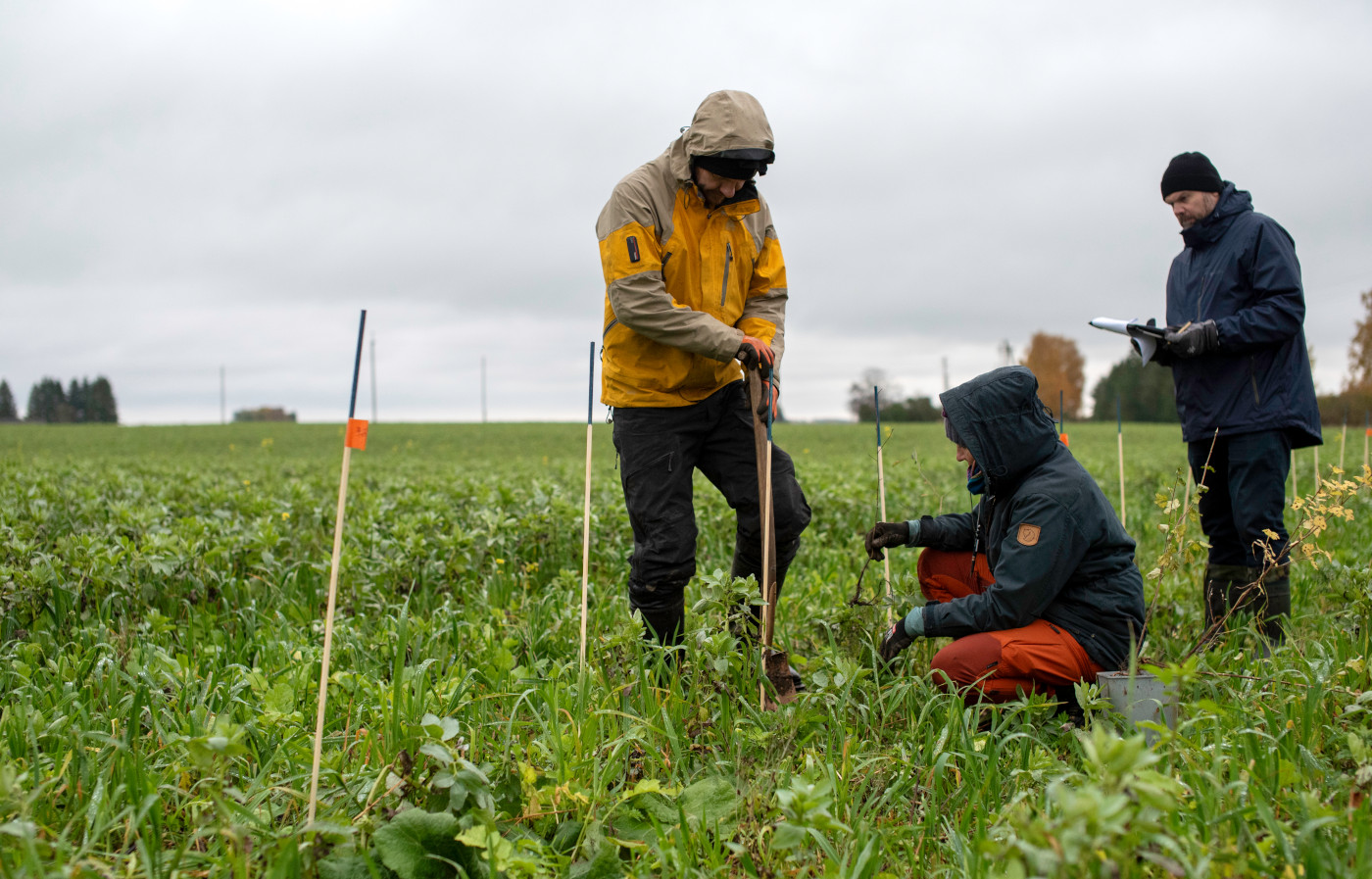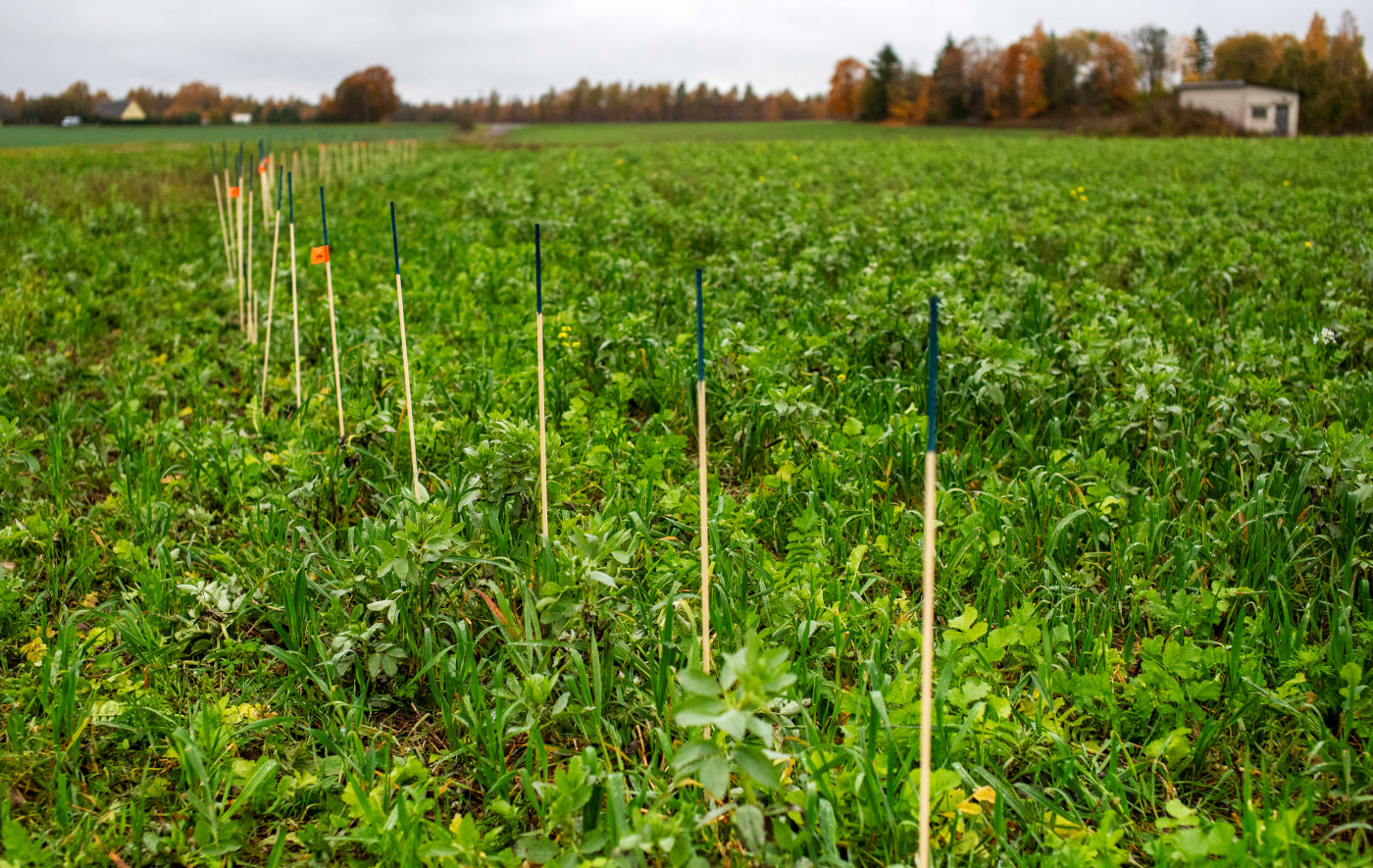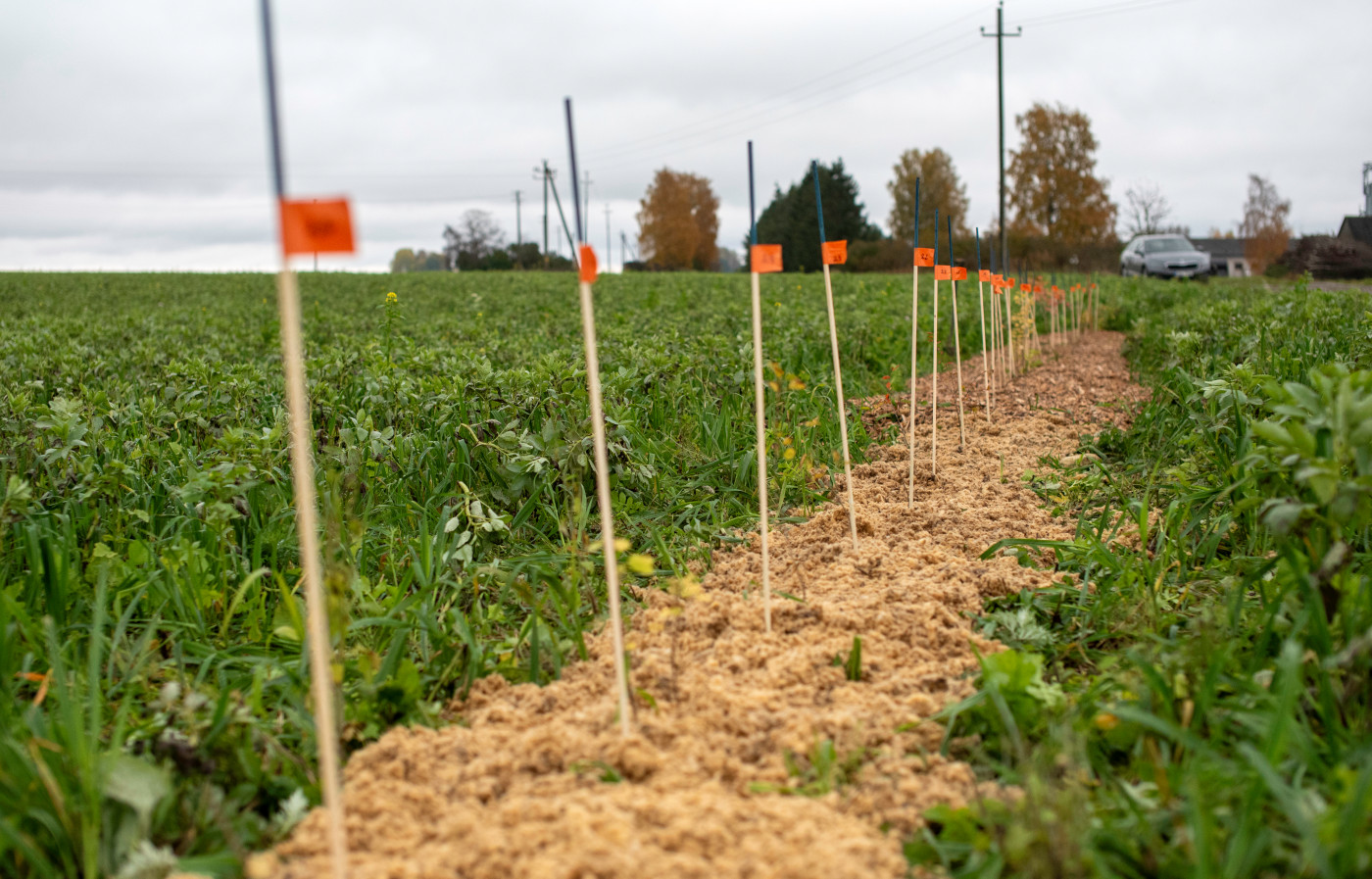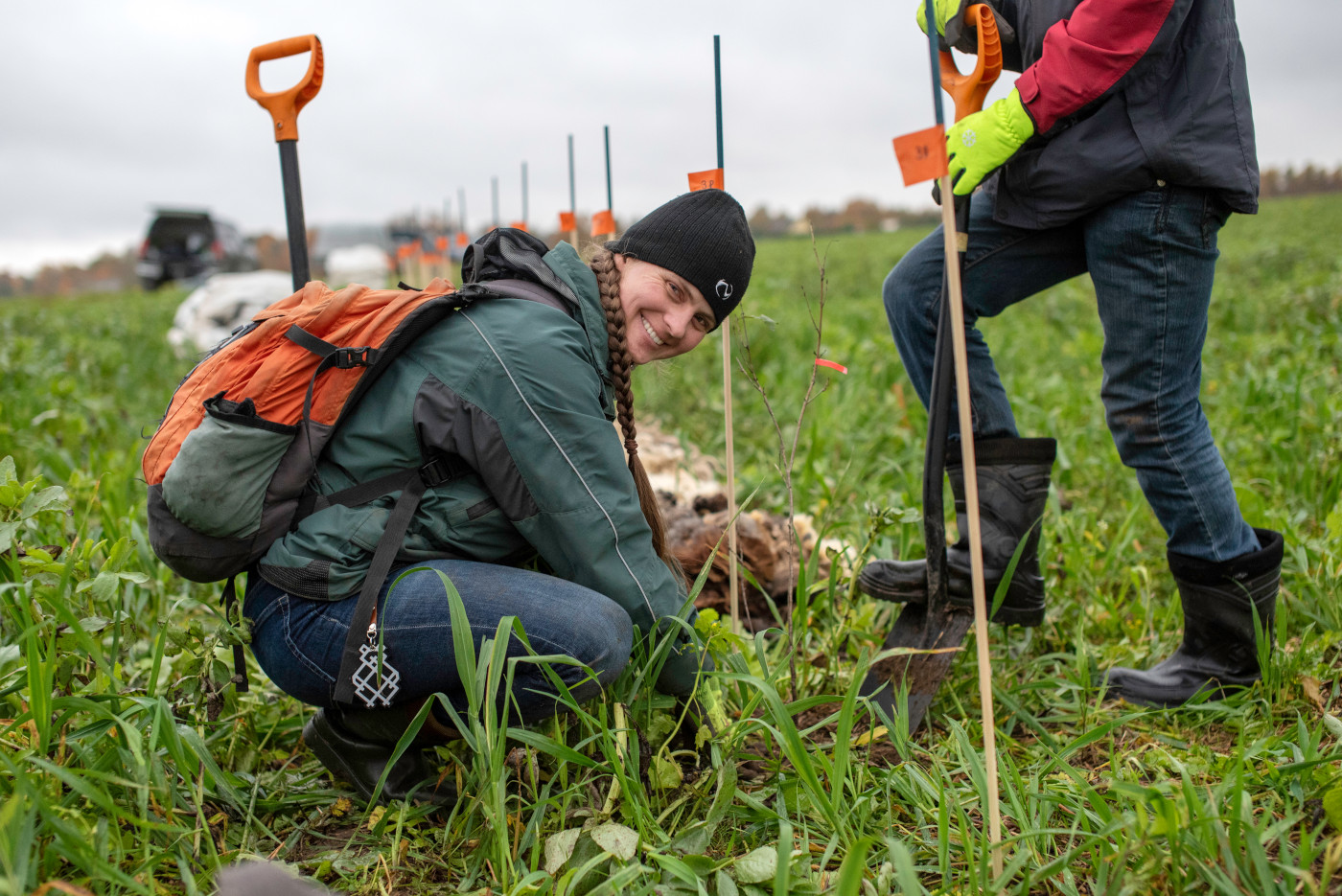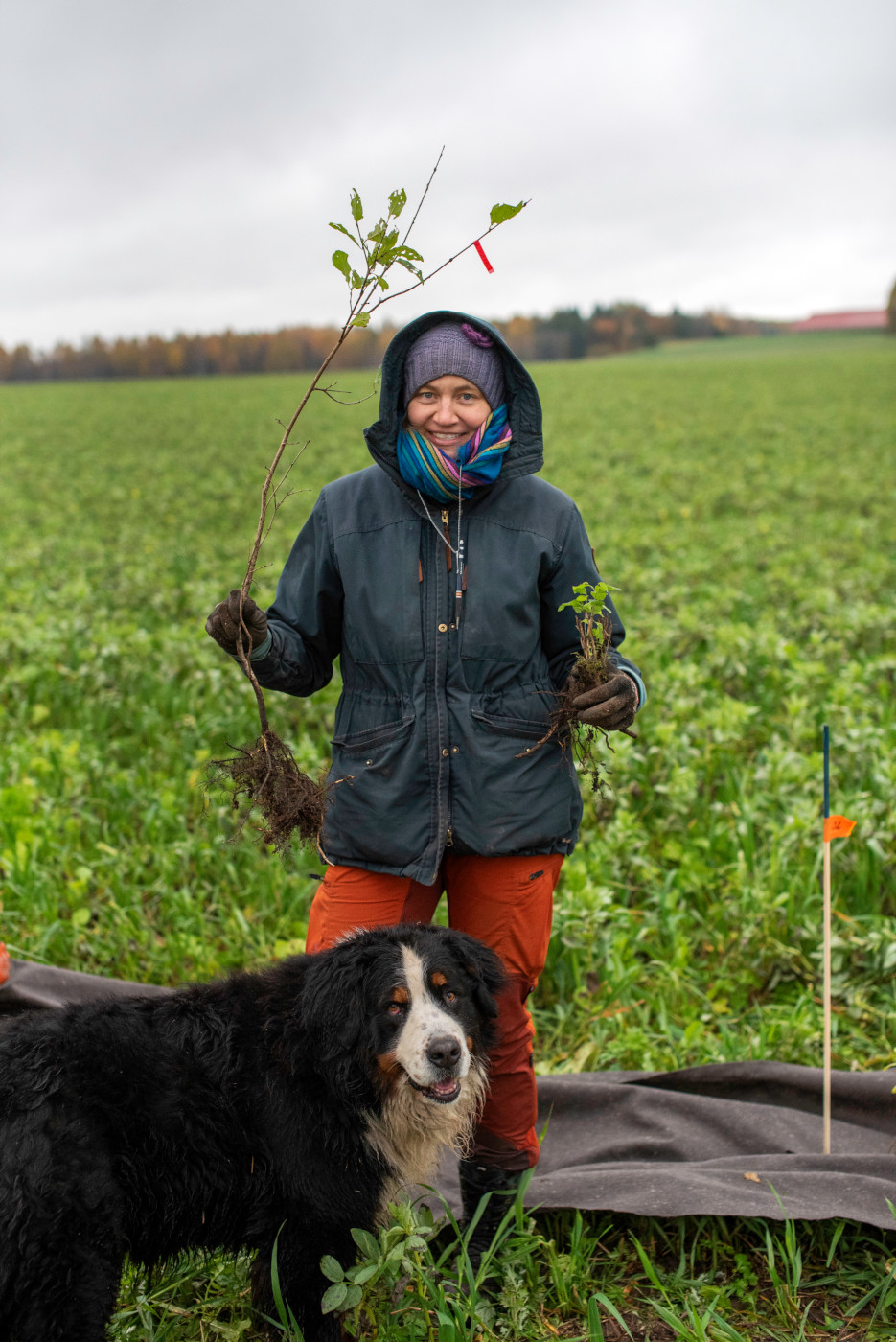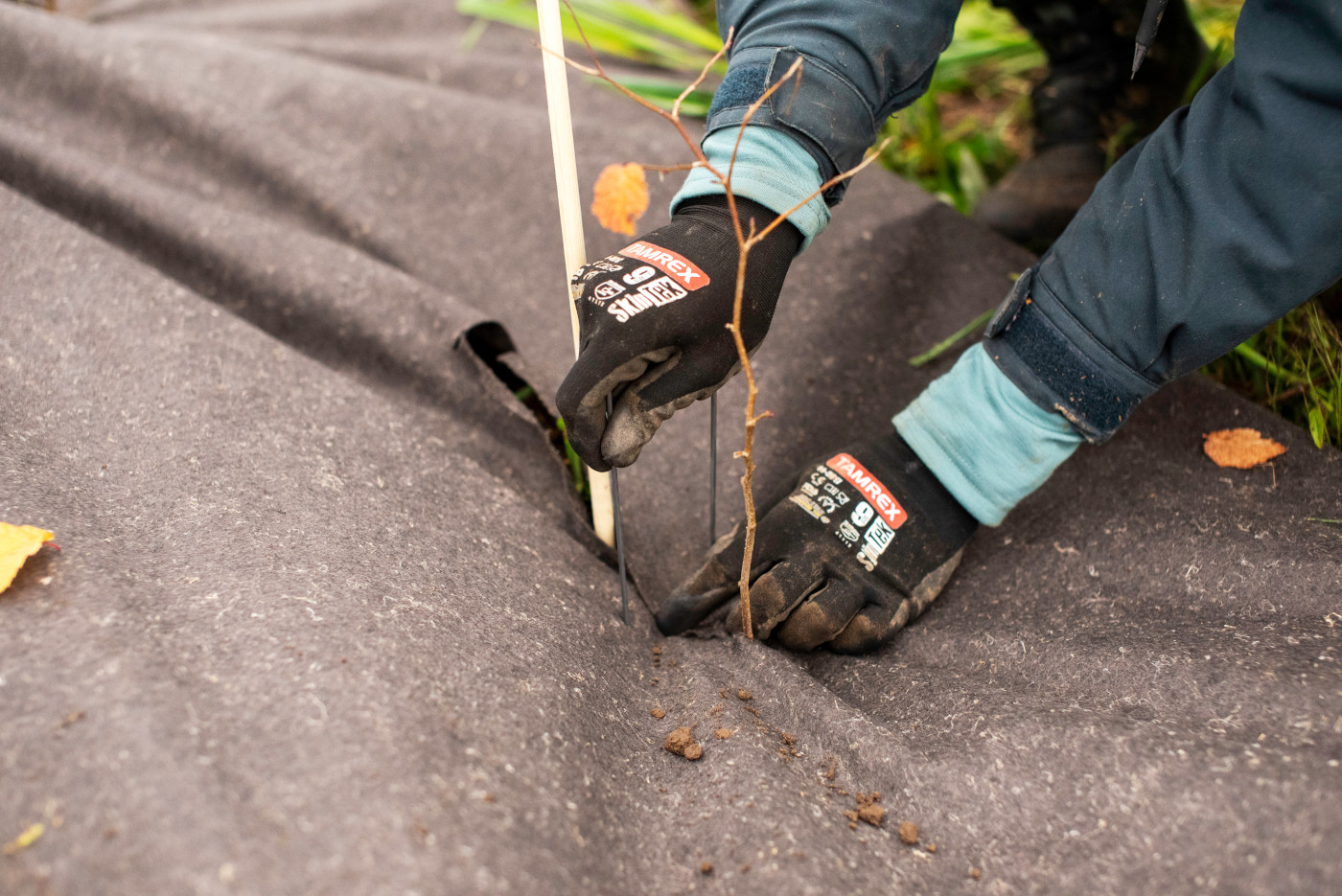October 24, 2024
Kaidi Tingas
We planted the first hedges on agricultural landscapes
Last week, in order to enrich agricultural landscapes, we planted a 130-metre hedge in the ‘Postirõõmu’ field of OÜ Mäemõisa, consisting of various trees and shrubs suitable for hedge plants – boxwood, viburnum shrubs, mountain currant, buckthorn, hawthorn, hazel, elm, etc. We used various mulches and trunk protection methods in the planting area in order to later analyse these methods and select the most suitable ones.
Enrichment of agricultural landscapes with hedges is an agroecological technique that the University of Tartu Landscape Diversity Workgroup is experimenting in the LIFE-IP project ForEst&FarmLand in cooperation with farmers. ‘We need green corridors to connect two forest arrays, each located at a different end of the field,’ explain Sander Hiire and Marian Nummert, a brother and sister whose family runs the Mäemõisa farm. The farm, which initially covered two hectares, has been expanded to a thousand hectares in 30 years. The hedge is also to contain edible plants, which could be used for something in the future. A tree alley along the road is nice in itself – it makes the landscape much more cheerful, they explain. The tree alley – and thus also a fancy driveway – was easier to justify to dad, too: we have done something useful as well as beautiful! In contrast, it has been harder to convince the older generation of the usefulness of farmland strips (which is also one of the agroecological techniques we are testing). ‘The farmland strips are something new and we may be overthinking it,’ says Sander, ‘but it’s good that we’re collaborating with the scientific community, getting information from them, so that we’re not alone with our thoughts and ideas.’
‘This project allows considerable freedom to do and design things ourselves,’ adds Marian. ‘We had seen tree hedges and thought about planting them, but now, in cooperation with the University of Tartu, things came together. I could prepare a planting plan – what to plant, of what origin, pattern, usage – there is a lot of creative freedom. ‘Traditional agriculture with horse and plough was very time-consuming, and industrial agriculture was very fuel-intensive, but regenerative agriculture is design-intensive,’ Sander sums things up.
They are both constantly thinking about the green corridor and how to increase the biodiversity of their land with minimal effort. According to Marian, the easiest way would be to put an upright stake in the middle of the field, which would attract birds, who in turn would bring seeds and fertiliser. PRIA does not yet allow simply leaving a two-metre wide unmaintained area to see what nature would bring to the field, but it is obvious that the agricultural landscape needs to be enriched. Sander and Marian emphasise that the necessary support measures should be part of the EU common agricultural policy.
As for the hedge, we make observations about different planting tools and processes in the course of the project, which in turn could be helpful for us and other hedge enthusiasts in planting hedges in the future.

